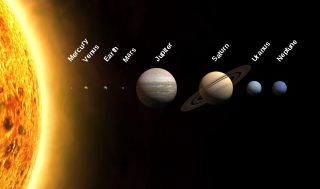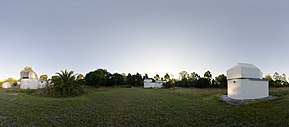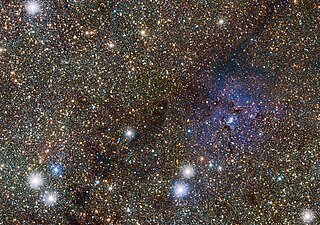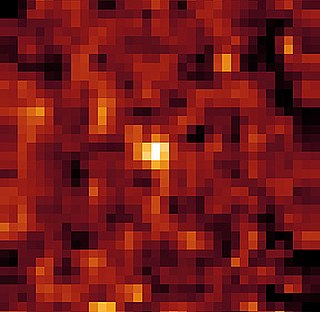Telescopes at Los Molinos Observatory | |
| Alternative names | Observatorio Astronómico Los Molinos |
|---|---|
| Organization | Universidad de la República |
| Observatory code | 844 |
| Location | Montevideo, Montevideo, Uruguay |
| Coordinates | 34°45′19″S56°11′25″W / 34.75539°S 56.19022°W Coordinates: 34°45′19″S56°11′25″W / 34.75539°S 56.19022°W |
| Altitude | 28 m (92 ft) |
| Established | 1994 |
| Website | www |
Los Molinos Observatory (Spanish : Observatorio Astronómico Los Molinos, OALM; obs. code: 844) is an astronomical observatory owned by the Ministerio de Educación y Cultura de Uruguay and operated in collaboration with the University of the Republic's Astronomy Department. It is located near the city of Las Piedras, on the outskirts of Montevideo, Uruguay. [1]

Spanish or Castilian is a Romance language that originated in the Castile region of Spain and today has hundreds of millions of native speakers in the Americas and Spain. It is a global language and the world's second-most spoken native language, after Mandarin Chinese.

Astronomy is a natural science that studies celestial objects and phenomena. It applies mathematics, physics, and chemistry in an effort to explain the origin of those objects and phenomena and their evolution. Objects of interest include planets, moons, stars, nebulae, galaxies, and comets; the phenomena also includes supernova explosions, gamma ray bursts, quasars, blazars, pulsars, and cosmic microwave background radiation. More generally, all phenomena that originate outside Earth's atmosphere are within the purview of astronomy. A related but distinct subject is physical cosmology, which is the study of the Universe as a whole.

An observatory is a location used for observing terrestrial or celestial events. Astronomy, climatology/meteorology, geophysical, oceanography and volcanology are examples of disciplines for which observatories have been constructed. Historically, observatories were as simple as containing an astronomical sextant or Stonehenge.
Contents
The observatory is actively involved in follow-up observations of small bodies in the Solar System such as asteroids and comets. [2] It has the observatory code 844. [3]

The Solar System is the gravitationally bound planetary system of the Sun and the objects that orbit it, either directly or indirectly. Of the objects that orbit the Sun directly, the largest are the eight planets, with the remainder being smaller objects, such as the five dwarf planets and small Solar System bodies. Of the objects that orbit the Sun indirectly—the moons—two are larger than the smallest planet, Mercury.

Asteroids are minor planets, especially of the inner Solar System. Larger asteroids have also been called planetoids. These terms have historically been applied to any astronomical object orbiting the Sun that did not resemble a planet-like disc and was not observed to have characteristics of an active comet such as a tail. As minor planets in the outer Solar System were discovered they were typically found to have volatile-rich surfaces similar to comets. As a result, they were often distinguished from objects found in the main asteroid belt. In this article, the term "asteroid" refers to the minor planets of the inner Solar System including those co-orbital with Jupiter.

A comet is an icy, small Solar System body that, when passing close to the Sun, warms and begins to release gases, a process called outgassing. This produces a visible atmosphere or coma, and sometimes also a tail. These phenomena are due to the effects of solar radiation and the solar wind acting upon the nucleus of the comet. Comet nuclei range from a few hundred metres to tens of kilometres across and are composed of loose collections of ice, dust, and small rocky particles. The coma may be up to 15 times the Earth's diameter, while the tail may stretch one astronomical unit. If sufficiently bright, a comet may be seen from the Earth without the aid of a telescope and may subtend an arc of 30° across the sky. Comets have been observed and recorded since ancient times by many cultures.
The main-belt asteroid 10476 Los Molinos, discovered by American astronomer Schelte Bus at the Siding Spring Observatory in 1981, was named after this observatory. [2] The official naming citation was published on 13 April 2017 by the Minor Planet Center ( M.P.C. 103975). [4]
10476 Los Molinos, provisional designation 1981 EY38, is a stony background asteroid and slow rotator from the inner regions of the asteroid belt, approximately 2.9 kilometers (1.8 miles) in diameter. It was discovered on 2 March 1981, by American astronomer Schelte Bus at the Siding Spring Observatory in Australia. The asteroid was named for the Los Molinos Observatory in Uruguay.

Siding Spring Observatory near Coonabarabran, New South Wales, Australia, part of the Research School of Astronomy & Astrophysics (RSAA) at the Australian National University (ANU), incorporates the Anglo-Australian Telescope along with a collection of other telescopes owned by the Australian National University, the University of New South Wales, and other institutions. The observatory is situated 1,165 metres (3,822 ft) above sea level in the Warrumbungle National Park on Mount Woorat, also known as Siding Spring Mountain. Siding Spring Observatory is owned by the Australian National University (ANU) and is part of the Mount Stromlo and Siding Spring Observatories research school.
The Minor Planet Center (MPC) is the official worldwide organization in charge of collecting observational data for minor planets, calculating their orbits and publishing this information via the Minor Planet Circulars. Under the auspices of the International Astronomical Union (IAU), it operates at the Smithsonian Astrophysical Observatory, which is part of the Center for Astrophysics along with the Harvard College Observatory.






